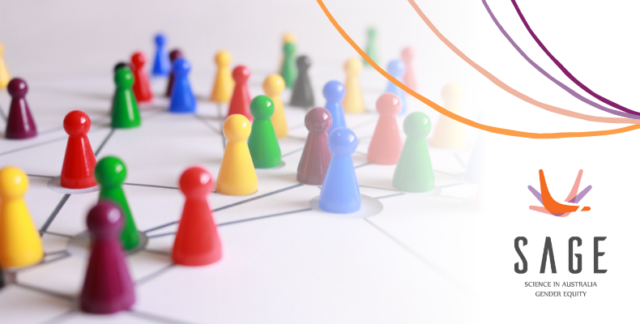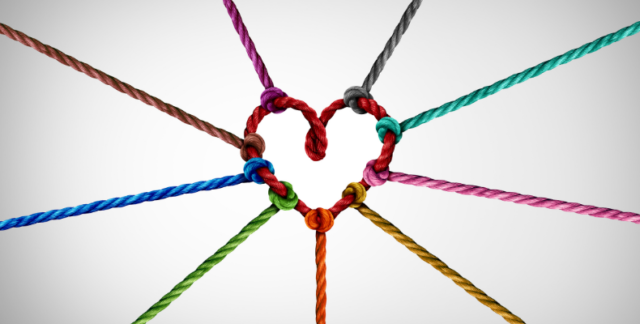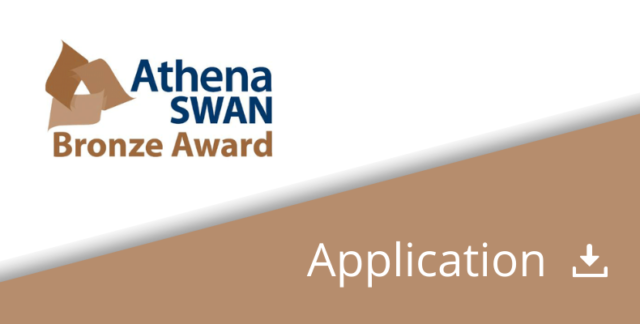00:03 Signi Livingstone-Peters
In 2015, a group of like-minded and passionate people at Macquarie University came together with one idea in mind: to take a more holistic approach to gender equity and diversity.
Skip forward six years and their ideas evolved to take not only a holistic approach to gender equity and diversity in STEM, but more broadly within their university.
I’m Signi Livingstone-Peters, and in this episode of Think Difference, I’m joined by Professor Lesley Hughes and Nicole Gower from Macquarie University.
They’ll discuss Macquarie’s SAGE journey, their systemic approach to tackling inequity, and a new promotion policy that has increased the number of women applying for promotion by 87%.
Lesley, Nicole: welcome.
00:43 Nicole Gower
Glad to be here. Thank you.
00:44 Signi Livingstone-Peters
Lesley, we’ll start with you. Can you tell me just a bit about yourself, your role, your background and specifically, what drove you to be active in the gender, equity and diversity space?
00:54 Lesley Hughes
Well, I’m an ecologist by background. Most of my research has been studying the impacts of climate change on species and ecosystems. In recent years (or probably the last decade) most of my work has involved communicating about climate science.
I’ve been at Macquarie for a long time. I did my PhD at Macquarie – went away for a while to do a post-doc, and then came back as a lecturer and I’ve been here ever since.
My current role is a hybrid one: 30% of my time is still in my department, which is Biological Sciences, and 70% is as Pro Vice-Chancellor (Research Integrity & Development), which is a very big mouthful.
Under that portfolio, one of the things I have carriage of is development of researchers, and that’s made me interested in development for staff more generally.
I guess as a woman in STEM myself, I’ve been in the situation of being in a minority, I suppose, in a larger field. I have to say, however, that I don’t remember any either overt or covert discrimination on my part that I’ve been aware of, but I know that many others have not been so lucky.
So this role with gender equity, and more broadly equity and inclusion, fits both me and my role at the university well.
02:20 Signi Livingstone-Peters
Nicole, tell me a bit about yourself. As we’re just saying, you’re the Director of Human Resources at Macquarie seven years ago.
What does your career journey look like since then, and how did you become involved in the gender equity strategy?
02:33 Nicole Gower
I think gender equity has always been a passion of mine, both personally and professionally. My background before my days in universities was actually in the law.
I was a lawyer for many years in private practice. Beyond the traditional legal practice, I was always involved in gender equity/anti-discrimination laws.
I had a mediation practice; I also had a national workplace training practice and did a lot of work around educating workplaces and people in workplaces about how to be more gender-inclusive. So for me, the gender equity work has always been a feature of my career and has always been a really strong interest of mine.
My current role at Macquarie University: I’m the Vice-President of People and Services – so still having HR in my portfolio, as well as some other parts like IT and analytics and organisational transformation.
As part of that role, being on the Executive Group, I could see an opportunity to really lead in this space to try and move the dial for Macquarie and to have an impact.
So the two worlds joined that personal and professional passion, and then wanting to actually play a role.
I’m also conscious – so personally, I’m a working mum. I’ve got two kids (both home schooling at the moment in current lockdown), so there was also an opportunity around how do I share that opportunity to be a role model, and to demonstrate and acknowledge that for everybody, including myself, there’s a juggle here.
I could see an opportunity to try and shape our workplace culture to be more inclusive, to be more equitable and to lead the way. That was something I’ve always felt very passionate about.
04:24 Signi Livingstone-Peters
Thank you. I’ll open this question up to both of you.
Macquarie is clearly a progressive organisation that’s committed to gender equity. It holds a number of awards, including the SAGE Athena [Swan] Bronze of course, as well as the Employer [of] Choice Award.
Can you just talk me through Macquarie’s gender equity journey and specifically, why did they decide to join SAGE? What prompted that?
04:47 Lesley Hughes
We joined in the second cohort of SAGE.
I have to admit that while we considered joining upfront, I guess we’re a little bit cautious and wanted to see how it was all going to go. We waited to see how it was going to go and then joined up in the second cohort.
We actually went a little bit off-piste fairly quickly, however. We decided very close to the beginning that because we already were doing work on gender equity at the institutional level more broadly, that we didn’t want to simply maintain the narrow focus on academic women in STEMM.
From a fairly early period, we expanded the mandate of our self-assessment team to be cross-institutional for all gender equity considerations; both academic staff and professional staff, and all faculties.
So while writing the application for SAGE was part of the role of that committee, it became actually quite a small role compared to our work in trying to extend gender equity more broadly across the university.
From that, however, we’ve broadened even further to consider all the other dimensions of equity, diversity and inclusion.
The current committee that has (amongst other things) a role in SAGE is actually very broad. It’s called Macquarie Inclusion (MQ Inclusion) and we are now looking at how to shape policies to support not just gender equity, but inclusion, diversity and belonging right across the university.
So that’s been our journey in a nutshell, I suppose.
06:35 Nicole Gower
Lesley’s right – our work in gender equity predated joining the Athena Swan program and being involved in this.
For us, it started around 2015, when we were keen to do work in gender equity and to develop a new gender equity strategy, because our university had this strong history of being very progressive in this space – of leading in this space.
When we were first formed in the 1960s, there was this strong mandate to be a different kind of university, and to actually create a place where women could come to campus, could bring their children, could attend lectures.
We’ve always had that strong history. We were the first university to have a female Vice-Chancellor, so we had this leading position and we felt that we’d kind of lost some of that leadership, and we were keen to take it back.
We were quite bold and aspirational when we set out on this journey.
Initially, we formed a working group, and I had a partnership with Professor Sakkie Pretorius, who’s our Deputy Vice-Chancellor (Research). We formed a group of passionate and like-minded people, including Lesley, to be our first strategy development group and to actually do some further work in this space.
When we first set out about doing that, the first kind of question that came to mind is: are there others doing this well and can we have a look at what they’re doing? In fact, somebody said to me, “Is there a good one that we could just copy?”
And what we learned very quickly was we actually really needed to understand our organisation – what were the issues that we were facing, and really look inward and understand the environment that we were in. It wasn’t a matter of simply seeing a good one and doing the same thing – we really had to understand our own circumstances.
I think one of the things that the SAGE program helped with is giving some structure to some of that analysis, providing those opportunities to share information with others.
But as Lesley said, we wanted to go beyond that and really ensure that we took a holistic approach, a systemic approach, and so that’s what we’ve done and where our gender equity strategy was born from.
Since then, it’s evolved quite significantly and quite broadly, to ensure that we do take that holistic view across all areas of inclusion.
Now, we talk about our MQ Inclusion strategy, and then sort of having streams within that, to ensure that we’re not losing focus on particular areas as well.
09:19 Signi Livingstone-Peters
I think institutions look at each other and can learn a lot from each other really, so I’m curious about Macquarie’s SAGE action plan – particularly about some of the actions that have worked really well at Macquarie and what sort of things have worked, what sort of things haven’t.
Are there things that have surprised you – findings and examples that have surprised you along the way?
09:39 Nicole Gower
Yeah, I think I’ll talk a little bit about both the “what” and the “how”.
Because I think as we reflect back on our experience, what we have done may be quite similar to other organisations; how we have done it is quite different.
If you have a look at our action plan, there’s six key areas of focus that I think would be similar to other universities.
We have goals around a more inclusive and equitable culture; leadership is a feature and what are our expectations of leading in an inclusive way; building our talent pipeline to attract and recruit more women, particularly in academic fields; improving representation of women in senior and leadership positions; establishing a workplace culture of flexibility; and closing the gender pay gap.
All feature in our action plan, and I would be amazed if other universities didn’t have similar goals and objectives and action plans around that.
Where I think we have taken a slightly different pathway is how we have sought to achieve that, and there’s three key elements of that that I think are a little bit different.
One is this concept of fixing the system. I’ve got to say, that has been challenging at times, because it does require an interrogation of broad systems (like the academic promotion system that Lesley has spoken about), to actually look holistically and in-depth at how is that system structured. Are there points that create inequity? And then working at that systemic level to change it and tracking over time the impacts of that.
So that has been one feature. Another has been quite a distributed leadership approach.
One of the things that our Vice-Chancellor talks about is the need for sustainable change, not just a starburst and a small (even if it’s a significant) improvement, but how do we change sustainably over time and so our action plan needs to go beyond what Lesley does, what I do, what those key people driving the strategy might do.
We’ve taken a distributed leadership approach, where we’ve really engaged people throughout the whole university to play a role here. That means, I think, as you work through the strategy, being prepared to give up some control. You know that you can’t control all of the actions – that you actually rely on others to generate ideas to drive progress.
One of the things that has been perhaps not surprising, but really rewarding I think, is seeing the outcomes of that: the ideas that come out from others who perhaps are still developing their knowledge, still working in this space and who come up with really innovative, creative ways to make a difference; and how impactful it is in those particular areas, seeing their own leadership; their own colleagues, their own peers really taking an interest and playing a role.
So that’s probably the second key element of how we have gone about it, is that distributed leadership model.
And then thirdly (and perhaps others do this too, I’m sure they probably do) for us: the power of storytelling and data and evidence to really drive the action that we take.
Ensuring that we always have the evidence, that we’re academically led, and that we’re informed by evidence in this space – that we rely on data, but also in terms of how we influence and take others along with us, that we share our stories – stories of success. As Lesley has described, some of those stories – we share those with the university community as we developed our second iteration of our action plan.
In each area, we shared stories of success and then what next, to really get that sense of how are we going and where to from here.
13:39 Lesley Hughes
And if I could just add to that – Nicole described the distributed leadership model. We now have Diversity and Inclusion Committees in each of our four faculties, and in each of our four major professional staff portfolios.
They send representatives to our overarching umbrella committee and MQ Inclusion. That allows for communication about ideas to be both vertical and horizontal across the university. So that distributed leadership model whereby each faculty in portfolios, committees now are doing their own action plans.
Indeed, below that level, a lot of our departments also have diversity and inclusion committees that feed up. I think that’s been really important to give the signal that this is not a top-down approach from somebody like Nicole or I. This is actually quite a grassroots, collective objective right across the institution.
14:43 Signi Livingstone-Peters
How is this period of obvious disruptions in COVID-19 over the last year? How have you managed to keep momentum going as we navigate this completely – and I hate to say the word unprecedented, but – unprecedented times?
14:58 Nicole Gower
Well, I think the first comment I would make is I think this work is more important now than ever, because what we have seen is there has been an impact, a significant impact, for women in this kind of disruption.
I think it’s important to acknowledge that. Again, to understand it, to ensure that we have data and we have evidence to acknowledge it, and to then identify how do we best support and ensure that we continue to have momentum.
So for us, again, seeking to fix the system, sometimes that’s been looking at what are our arrangements for casual staff members and ensuring that they’re not disadvantaged in a more inequitable way by this current level of disruption. I think we were the first university to come out and say, if casuals were impacted by COVID, there would be some special provisions to ensure that they too were protected.
Ensuring that in our academic promotion system, we acknowledge the impacts of home schooling and the impacts that women might experience (and some men and carers) around what’s happening in the current COVID context.
We’ve tried to take our same approach of looking at the evidence, looking at systems and ensuring that we’re always current in our understanding of what the impacts are from the current circumstances, and addressing those holistically.
16:21 Lesley Hughes
And if I could add to that – look, Macquarie, like many educational institutions in Australia, has suffered some financial hardships because of the reduction in international students and the impact on the budget bottom line.
Like many institutions, we’ve had to lose some of our staff to meet our new reduced circumstances. But what we have really tried to do is to have principles of equity and diversity underpinning all of those very, very difficult decisions.
Our MQI committee, together with the diversity and inclusion unit at Macquarie and Nicole, actually wrote a set of principles that committees needed to abide by when they were making decisions about future staffing.
One or two years ago, I don’t think that would have happened. But I think the level of awareness about the need for these principles to be so thoroughly embedded in everything we do meant that it’s sort of becoming so common now that it becomes a more natural part of everyday business.
And so while Macquarie has been through a very painful period in the last few months, as have most other institutions, we certainly have been really trying hard to ensure that equity and diversity principles have been embedded in those decisions.
17:53 Signi Livingstone-Peters
Lesley, I’ll throw this one over to you. I read a quote of yours that I think resonates with the discussion about COVID-19 and just what the last couple of years have brought in general.
You said, history is about “looking into the future, but being mindful of the past”.
I’m just curious to hear you speak of how this relates to your own career journey and Macquarie’s SAGE journey, as we move into another decade that could possibly be quite different than what we’ve experienced in the past.
18:23 Lesley Hughes
Yeah, look, I think for academics in particular, the future is quite uncertain. When I was a young academic, it was still really, really hard to get a job and I felt very lucky when I did get one.
But I think the expectations on academics in terms of their achievements before they get a job, are orders of magnitude greater than when I was, say, moving from a post-doc to a lectureship.
So I’m always very mindful of that, and one of the one of my major roles at the university is to support the @SciGenderEquity. You can also subscribe to our podcasts via Apple Podcasts or Spotify.
Stay tuned for more stories on gender equity and diversity. I’m Signi Livingstone-Peters. See you next time.



